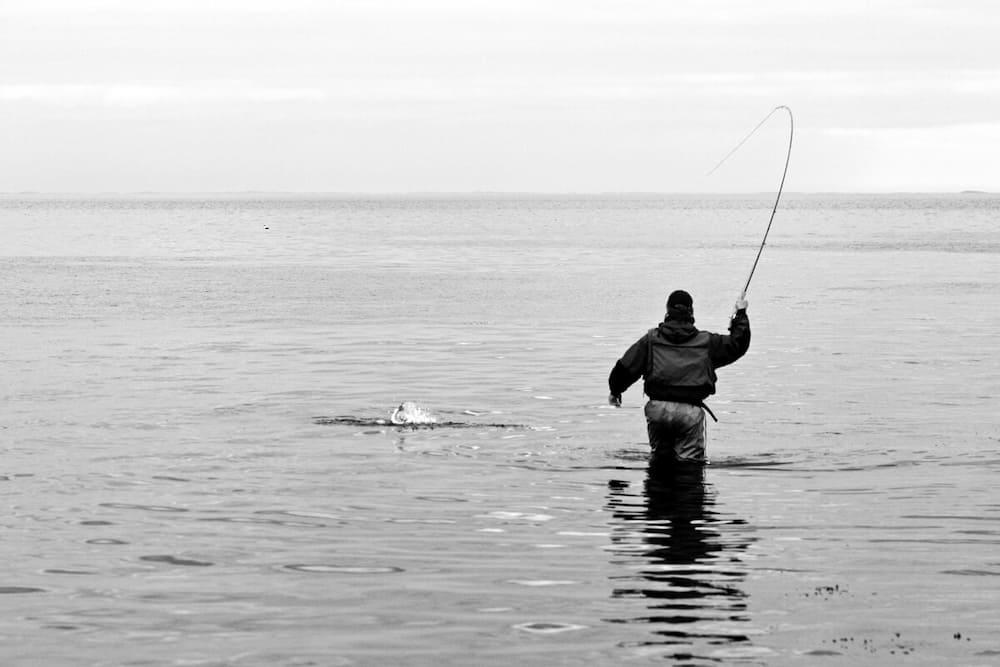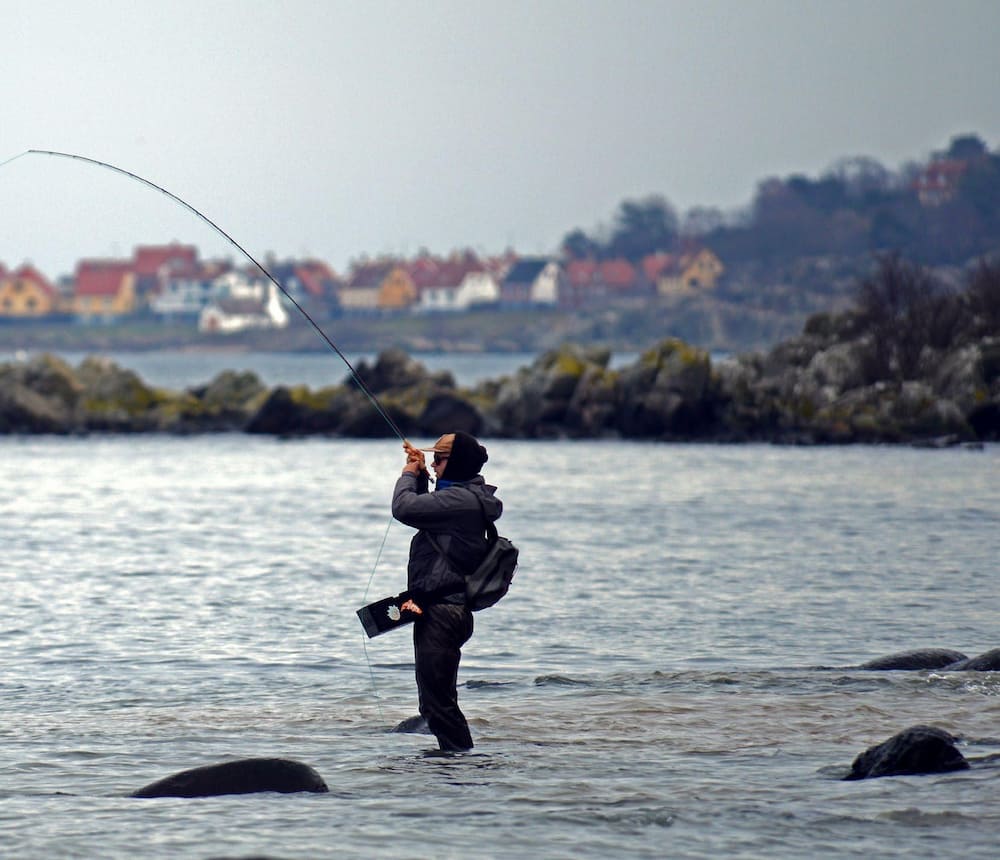Fishing in the North Sea is concentrated in the southern part of the coastal waters. Trawling is the primary method of fishing.
The number of annual catches increased every year until the 1980s, when they peaked at over 3 million metric tons (3.3 million S/T). Since that time, the figures have decreased to roughly 2.3 million tons (2.5 million S/T) per year, with significant variations between years. Along with the fish, an estimated 150,000 metric tons (165,000 S/T) of by-catch that cannot be sold and about 85,000 metric tons (94,000 S/T) of dead and injured invertebrates are also taken.
In order to make fish oil and fish meal, about half of the fish that are caught are used.
For more information, keep reading.
Table of Contents
Most Popular Northern European Freshwater Fish
Kitkan Viisas
Kitkan viisas is a vendace of the species Coregonus albula caught in the river basin of the In the northern hemisphere’s Koillismaa Highlands, close to the Arctic Circle, the lakes are covered in ice from October to May. Due to the low levels of nutrients in the water, this small, dark-colored fish (7-9 cm) has a soft backbone.
After being caught, the fish is cleaned, at the very least having its guts and gills removed. Other fish parts may be removed as well, but the vendace’s distinctive original form must be preserved. Long winters result in an enforced fast that causes the fish’s intestines to be completely empty, negating the need for cleaning.
Atlantic Salmon
Norway exports about 40% of its total seafood production, primarily as Atlantic salmon. The majority of it is farmed salmon, which is kept in enormous tanks that are moored off the coast instead of being caught in the wild. Salmon products that are exported around the world are fresh whole salmon, frozen whole salmon, frozen salmon fillets, and fresh salmon fillets, in decreasing order of quantity.
Since the 1970s, when the world’s first successfully farmed salmon was placed into a pen in a fjord outside Trodheim, Norwegian salmon has become increasingly well-known and popular around the world due to its great versatility, flavor, and high nutritional content.
Puruveden Muikku
Puruveden muikku is the vendace of the species Coregonus albula caught in the clear waters of the Using seine nets, fyke nets, and net fishing, people fish in the Puruvesi lake basin, which is part of Lake Saimaa’s northeastern shore.
Since the fourteenth century, Pruvesi has been a popular fishing destination, and generations have passed down the knowledge of how to find and catch fish there. Due to the exceptionally clear Puruvesi waters, Puruveden muikku has a distinctive silvery hue.
See more about Is Fishing A Sport? Why?
Most Popular Northern European Preserved Fish
Kæst Skata
Known for its rather pungent smell, kæst skata is an Fermented skate makes up this winter specialty from Iceland. Typically, skate fish is buried in sand and allowed to ferment for six months. This gives the fish its recognizable ammonia odor.
Occasional salting of the fish significantly reduces the intensity of its pungent smell. In Iceland, this fish specialty has long been an indispensable part of the holiday table for Þorláksmessa (Despite its declining popularity in recent years, the Mass of St. Thorlak, observed on December 23, is still widely observed.
Atlantic Smoked Salmon
Numerous varieties of smoked salmon can be found along the Eastern Seaboard of North America and in Northern Europe, and the broad category of “Atlantic smoked salmon” can include all of them. Salmon is cured and cold-smoked using traditional techniques, giving it a rich, buttery flavor.
Pasta dishes, sandwiches, and appetizers frequently feature it. Norway was the first country to start farming Atlantic salmon, and now smoked salmon from all over the world is mistakenly labeled as Norwegian smoked salmon.
Surströmming
Surströmming is a fermented fish product made with strömming, a type of herring, sourced from the cold waters of the Baltic Sea, typically in the springtime. Before the fish is canned, it is salted, cleaned, and given time to ferment. This herring is characterized by a distinct and potent odor that comes from the fermentation process that is started by a lactic acid enzyme in the herring’s spine and continues even after the fish has been canned.
Despite its overpowering aroma, fermented herring has a unique flavor that is the ideal balance of acidic, savory, and piquant. There’s also an annual surströmming festival (surströmmingsskiva) in Alfta, Halsingland, which is customarily held on the third Thursday in August, attracts a sizable contingent of enthusiastic Swedes and devotees of this fermented fish delicacy to enjoy the contents of numerous bulging cans of surströmming.

Norwegian Smoked Salmon (røkelaks)
Norwegian smoked salmon or røkelaks is one of the most popular smoked salmon varieties. It is typically made with farmed Atlantic salmon (Salmo salar), and it stands out for its high quality, vivid pink color, and tender, flaky flesh.
A distinct, subtly smoky note can be detected in the mild flavor and aroma. The salmon can be either wet- or dry-cured prior to smoking, and it can be either hot or cold during smoking—the latter of which is more common today. Smoking can include the addition of beech or other wood chips.
The type of salmon and the production methods will determine the final flavor profile.
Røget Hellefisk
Smoked halibut is a prized ingredient in traditional A deep, smoky flavor and a tender but firm texture define Danish cuisine. Typically, Greenland halibut is used to prepare it because it is a fish variety that is suitable for smoking.
Prior to being slowly dried, usually over beech wood, the fish is primarily salted and marinated. Served sliced, it is often used as a topping on open-faced smørrebrød sandwiches, and it perfectly pairs with various vegetables, creamy spreads, and fresh vegetables.
Norwegian Dried Cod (tørrfisk Fra Lofoten)
Tørrfisk fra Lofoten is a world famous naturally dried Atlantic cod (Gadus morhua) captured around one of the richest fishing areas, from January to April, Lofoten and Vesterlen. It ranges in size from 40 to 90 cm, has golden-colored skin, and a strong fish flavor and aroma.
The Lofoten region is the only place in the world with high-quality mature cod and such ideal conditions for fish to dry properly without freezing or decomposing because winters there are mild thanks to the Gulf Stream. Tørrfisk from Lofoten is naturally dried on flat lofts or drying racks, where the fish is preserved and matured as the water content decreases.
Boknafisk
Boknafisk is a type of dried fish that is typical of Lofoten and Vesterlen in particular in northern Norway. Following the same process of preparation as tørrfisk, a famous stockfish delicacy from the same region, this specialty typically features Atlantic codfish that have been headed, gutted, and then left to dry in the chilly winter air on wooden racks or walls.
Instead of being salted, the fish are dried for a brief period, typically between two and four weeks. The fish’s higher water content can be retained due to the shorter drying time, giving it a tender interior in contrast to its dry exterior.
Rakfisk
Rakfisk is a A specialty of Norway made by fermenting and salting fish for several months or even a year. Although any freshwater fish can be used in its preparation, trout or char are typically used. Raking is a method of fish preservation, thus the name rakfisk.
This fish dish is well known for having an extremely potent smell that is frequently compared to the smell of stale cheese or dirty socks. The fish has a mild, slightly salty flavor with a tang that is in contrast to its strong aromas. In Norway, rakfisk is typically enjoyed during the joyous Christmas season. It is also available at the annual Rakfisk Festival, which is held in November in the neighborhood of Valdres, which is thought to be the original birthplace of this delicacy.
Conclusion
Overfishing in recent decades has rendered many fisheries unproductive, disrupted the dynamics of the marine food chain, and cost the fishing industry jobs. Fisheries for herring, cod, and plaice may soon endure the same problems that led to the end of mackerel fishing in the 1970s due to overfishing. Fish stocks have been subject to a variety of regulations since the 1960s, including restrictions on fishing hours and the number of fishing boats. These regulations, however, were never consistently followed and offered little relief.
Since then, two significant fishing nations—the United Kingdom and Denmark—have joined the EU and made an effort to control the issue with the aid of the Common Fisheries Policy. In an effort to address the issue of overfishing, each EU member state has its own policies and laws. Conflicts between fishermen, such as the scallop fishing controversy in the English Channel in 2012, have been attributed to the various national policies.
I’m grateful you read.


